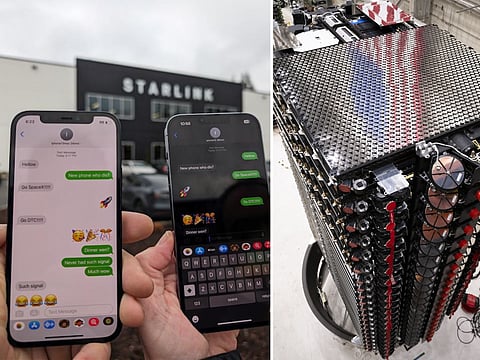Starlink’s direct-to-cell (D2C): No dead zones, no WiFi, just internet magic on wheels
Mobile connectivity anywhere in the world, even in remote place, could soon be here

No dead spots or dead zones.
That's the promise of Starlink direct-to-cell (D2C) service, which works in cars and remote areas, without WiFi or router.
And it's revolutionising how we chat.
Starlink’s D2C service has been rolled out in a number of countries and is already a game-changer: it lets your phone connect directly to satellites without Wi-Fi or extra gear, even while cruising in a car.
No cell sites needed
Launched by SpaceX, this tech beams signals from low Earth orbit (LEO) satellites to keep you texting in places where cell towers are just a dream.
Right now, it’s live in the United States, Canada, Australia, Japan, New Zealand, Switzerland, Chile, and Peru, with carriers like T-Mobile (US), Rogers (Canada), Optus and Telstra (Australia), KDDI (Japan), One NZ (New Zealand), Salt (Switzerland), and Entel (Chile and Peru) offering it.
T-Mobile’s “T-Satellite” service, for example, is free on premium plans like Go5G Next, or $10/month for others.
Smartphones with D2C
According to SpaceX, its D2C service currently works with over 60 phone models, including iPhones (13+), Samsung Galaxy (S21+), and Pixel 9s.
Tech behind it: over 650 Direct-to-Cell satellites (part of a 7,600+ Starlink constellation) act like orbiting cell towers, using eNodeB modems and so-called phased-array antennas to connect with standard 4G LTE phones.
These satellites, launched on Falcon 9 (and soon Starship), use laser backhaul for global reach and handle tricky stuff like Doppler shift for seamless handoffs.
How it works
D2C is a network of solar-powered cell towers in space – orbiting Earth at an altitude of 350 km (217 miles).
It means your cell phone will always work, and would come in handy even when a natural disaster cripples all ground-based infrastructures.
They’re built with custom silicon and advanced algorithms to boost signal strength, supporting SMS, location sharing, and soon, voice and data.
Global rollout
The global rollout is ramping up, with texting live now and voice, data.
IoT services are slated for late 2025 to early 2026, pending local carrier deals and regulations.
SpaceX aims for near-universal coverage with plans for 10,000+ satellites.
Upsides
It’s a lifeline for rural folks, eliminating dead zones across 500,000+ square miles in the US alone.
No apps or pointing at the sky needed — just text like normal.
It’s also a boon for emergencies (like 911 texting) and could connect IoT devices for industries like farming or shipping.
Downsides?
It’s text-only for now, with delays due to satellite handoffs.
It eats more battery than terrestrial signals, and coverage can be spotty in dense forests, valleys, or government-restricted zones.
Indoor use is iffy, though SpaceX claims it’s worked in homes without nearby windows in tests.
Tree canopies can disrupt signals, needing a clear sky view for best results.
Still, this D2C service is revolutionising connectivity, especially for remote areas, but it’s not perfect yet — think of it as a clutch backup, not a full-on 5G replacement.
Sign up for the Daily Briefing
Get the latest news and updates straight to your inbox






